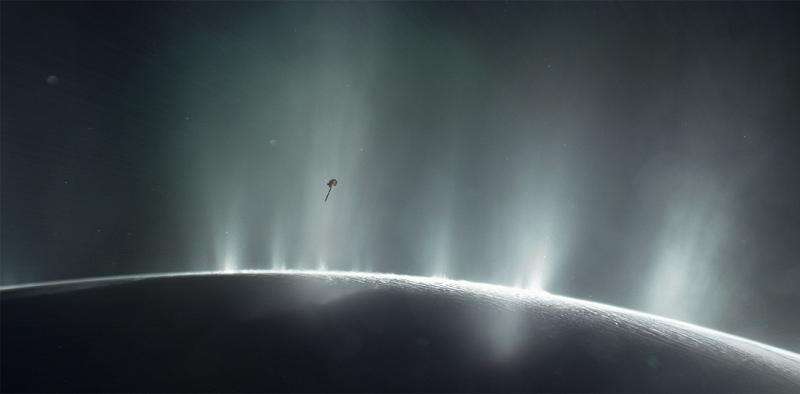Could a dedicated mission to Enceladus detect microbial life there?

Saturn's icy moon Enceladus is best known for its numerous geysers ejecting plumes of water and ice. These eruptive fountains perplex researchers searching for signs of microbial life beyond Earth. A dedicated spacecraft designed to study the plume-like features spewing from Enceladus could definitely tell us whether or not they contain alien microorganisms.
"We need a spacecraft to travel to Enceladus, fly through a geyser plume, and analyze the water that is immediately accessible," Geoffrey Marcy, a retired professor of astronomy at the University of California, Berkeley, told Astrowatch.net.
Marcy is a renowned exoplanet researcher who discovered many extrasolar worlds. He was one of the co-investigators of NASA's Kepler planet-hunting mission that detected more than 4,000 exoworlds. He was also involved in studies focusing on detecting signals from extraterrestrial civilizations and was the principal investigator of the Breakthrough Listen project. The program, funded by billionaire Yuri Milner, is looking for signs of extraterrestrial civilizations by searching stars and galaxies for radio signals and laser transmissions.
Marcy emphasizes that when it comes to searching for signs of microbial life in our solar system, assistance from billionaires investing in space projects could be helpful.
"The NASA missions, as currently planned, will require at least 20 years before a detection of microbial life will happen, at the earliest. However, a brilliant team of billionaires could work with NASA to fund a spacecraft to Saturn's moon, Enceladus. It could capture the water spurting out the geysers and use conventional microscopes to detect any microbial life there," Marcy said.
While a future mission to Enceladus would address complex questions about the origin of life, the spacecraft itself will be relatively easy to build and operate. According to Marcy, it would only require a dedicated probe equipped with a set of well-suited science instruments, capable of flying through the plumes and able to perform required measurements.
"The remarkable aspect of the search for microbes in the water spurting from geysers is that the spacecraft only needs to fly through the plume, well above the surface of Enceladus. No lander is needed—just a succession of flybys through the plumes as it orbits Enceladus," Marcy said.
He noted that such spacecraft should be fitted with a mass spectrometer to detect organic compounds that could be signs of microbial life. The spectrometer will look for amino acids and the structure of any organic molecules, especially fatty acids such as those composing cell membranes. It could also measure the relative amounts of isotopes of carbon (12 and 14) to detect non-natural anomalies due to biological processes.
Moreover, the mission to Enceladus would measure the properties of the water such as pH, oxidation and temperature, therefore assessing its suitability for organic life.
Marcy added that besides a spectrometer, the proposed spacecraft should also have an optical imaging system capable of capturing microscopic images in order to better examine microorganisms on this icy world.
"The mission should also include a microscope and camera to image directly any organisms in the water that are as small as a few microns in size," Marcy said.
Discovered in 1789 by William Herschel, Enceladus is the sixth-largest moon of Saturn with a diameter of about 310 miles (500 kilometers). First detailed pictures of this moon were acquired in the early 1980s by NASA's two Voyager probes. Since 2005, Enceladus is continuously studied by NASA/ESA Cassini spacecraft, which detected the water plumes erupting from the moon's south polar region.
Source: Astrowatch.net





















